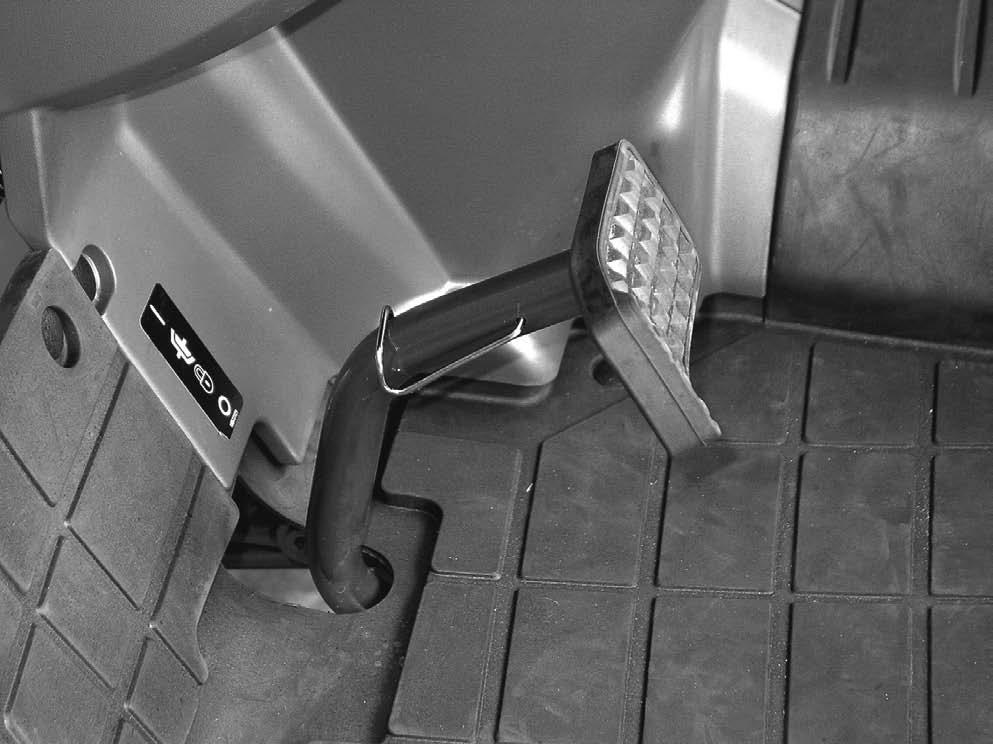
3 minute read
ELECTRICAL SYSTEM
When Charging the Battery
IMPORTANT: Battery can explode during boosting or charging. Always wear proper eye protection, such as a safety goggles.
If the electric circuit inside the battery is broken, charging can generate a spark inside the battery, which can cause it to explode. If the battery is discharged, and the reason for discharge is unknown and if the lamps or horn do not indicate some battery voltage, check the battery with a volt meter for an open circuit using following procedure.
1. Disconnect the negative (-) cable.
2. Connect the voltmeter across battery terminals.
3. If there is no voltage present, an open internal circuit is indicated. Replace the battery.
4. If voltage is present, the battery is OK to charge the battery with a current of 4 amperes for 5 to 10 hours. To charge the battery quickly for urgent need, use a current of 25 amperes for 30 minutes or less. A current larger than specified will cause liquid overflow due to foaming.
5. The specific gravity of electrolyte of a fully charged battery is 1.280 at 20 C (68 F).
NOTE:
1. If using a battery charger, be certain the charger is turned off before connecting to the battery.
2. Charge the battery in a well ventilated area.
3. Do not attempt to charge a frozen battery.
When working around storage batteries, remember that all of the exposed metal parts are "live". Never lay a metal object across the terminals because a spark or short circuit may result.
When Battery is Not in Use
When the tractor is not in use, the battery will need a charge every three mouths to keep the specific gravity at or above 1.240. A storage battery not in use will slowly discharge. A battery that has discharged can freeze at low ambient temperature and cause damage to the battery and tractor.
Storing The Tractor
When your tractor is not to be used for some time, it should be stored in a dry and protected place. Leaving your tractor outdoors, exposed to the elements, will shorten its life. Follow the procedure outlined below when your tractor is placed in storage for periods up to approximately six months.
See your Dealer for the procedure on longer storage periods.
A. Store the tractor so the tires are protected from light. Before storing the tractor, clean the tires thoroughly, Jack up the tractor, when it is to be out of service for a long period. If not jacked up, inflate the tires at regular intervals.
B. Run the engine long enough to thoroughly warm the oil in the crankcase, and then drain the oil. Change the oil filter as instructed in Engine Oil Filter. Refill the crankcase with new oil as specified in Engine Oil Selection in this manual and run the engine for five minutes.
C. Fill the fuel tank with a good grade of Number Two diesel engine fuel. If this grade has not been used regularly, drain the fuel and refill. Run the engine for about five minutes to circulate the fuel through the injection system.
D. Drain flush and fill the cooling system with an antifreeze mixture ratio to protect the engine to the lowest anticipated temperature or a minimum of 50 % antifreeze and add cooling system conditioner. See COOLING SYSTEM in this manual.
E. Do not remove the battery from the tractor, except for prolonged storage at below freezing temperature. The battery should be fully changed to prevent freezing of electrolyte. Disconnect the negative ground cable at the battery to prevent possible discharge.
F. Clutch assembly may become bound together if a tractor is not used for an extended period of time. A clutch lock latch is provided on your tractor to lock the clutch in the disengaged position and should be used to prevent this condition if your tractor is not used for an extended period of time.
Removing From Storage
Be sure that the grade of oil in the engine crankcase is as specified in Engine Oil Selection in this manual.
A. Loosen the fuel tank drain plug and fuel filter cup, and be sure all water and sediment has drained from the fuel system before closing. Tighten the drain plug and replace the filter cup.
B. Check the level of the coolant in the radiator.
C. Check engine oil level.
D. Check hydraulic fluid level.
E. See that the battery is fully charged and that the terminal connections are clamped tightly
F. On hydrostatic drive tractors, follow the same procedure for starting as Starting Procedure for Hydrostatic Drive Tractors after Transporting on truck or flatcar in this manual.
G. Start the engine and let it run slowly.
IMPORTANT: Keep the doors wide open and move the machine outside of the storage room immediately to avoid danger from exhaust fumes. Do not accelerate the engine rapidly or operate it at high speed immediately after starting.










